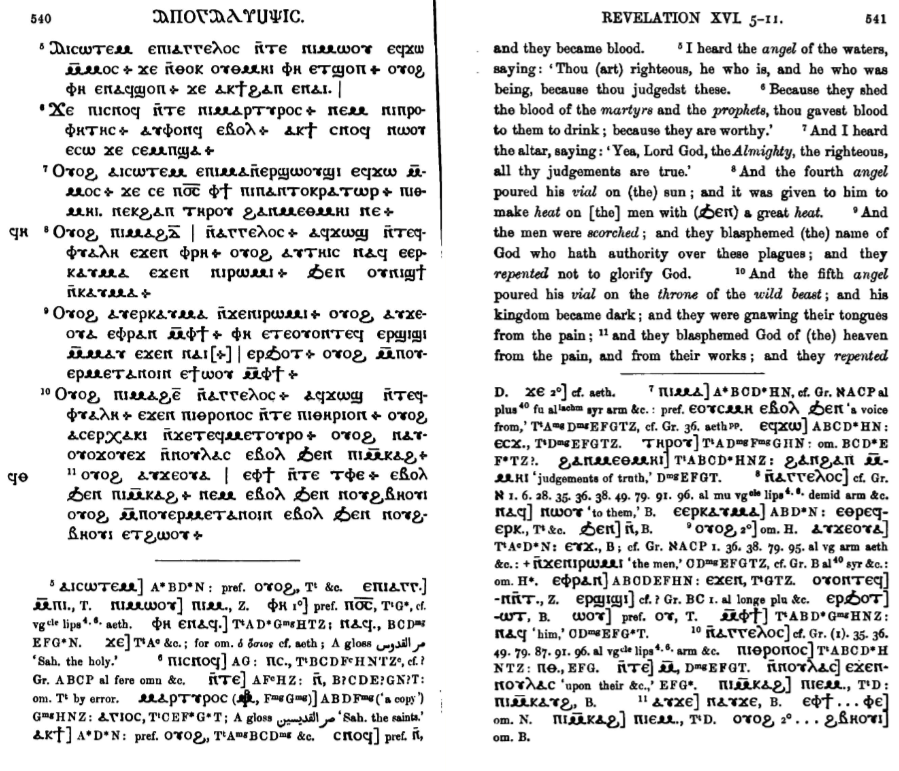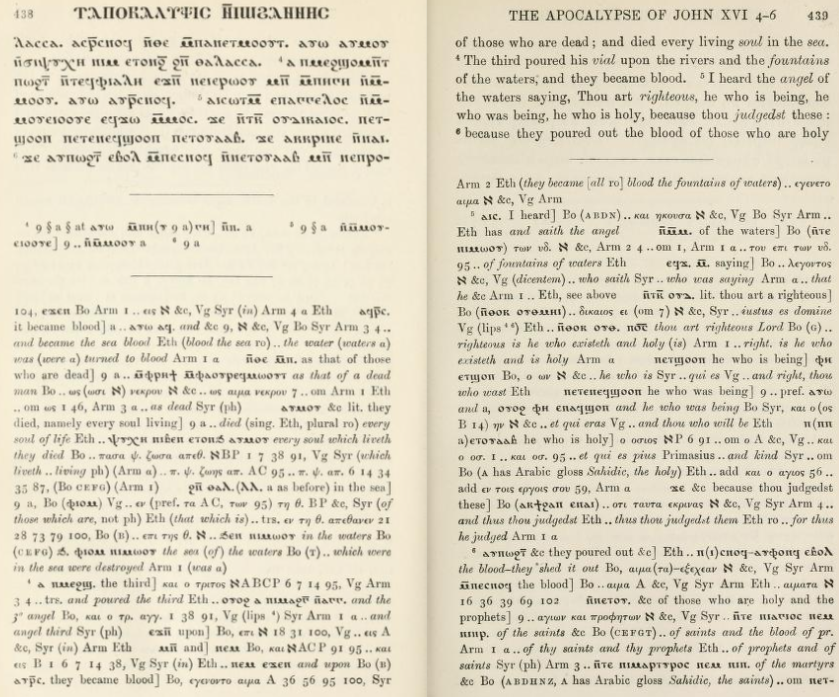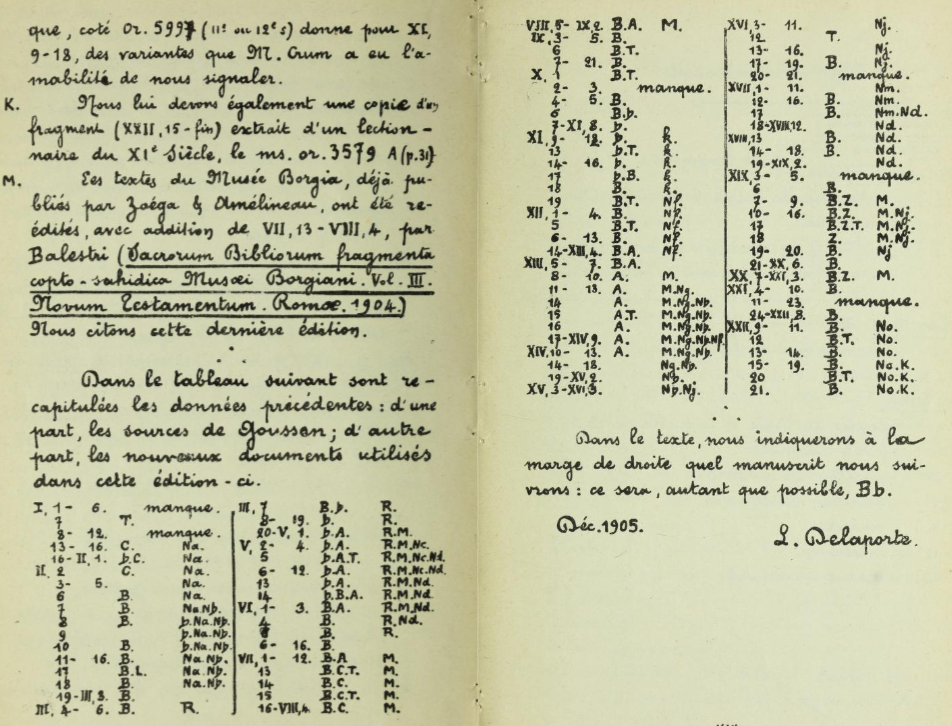eorge William Horner (1849-1930) is a bright light in the field of Coptic textual criticism. His two most notable contributions are:
- The Coptic version of the New Testament in the northern dialect, otherwise called Memphitic and Bohairic (apparently published by Horner from 1898-1905); and
- The Coptic version of the New Testament in the Southern dialect : otherwise called Sahidic and Thebaic ; with critical apparatus, literal English translation, register of fragments and estimate of the version (apparently published by Horner from 1911-24)
The Coptic translations have the benefit of being presumed to have been made directly from the Greek (and at a very early century), often including what appear (to me) to be Greek loan words and using an alphabet derived from the Greek alphabet.
Unfortunately for us, there are always limitations in the use of translations. Even if we literally back-translate using formal equivalency principles, we are not guaranteed that the original translator was using those same principles.
Bohairic
The Bohairic version is in the "northern" dialect of what is today Egypt, and is associated with the area near Memphis (Egypt, not Tennessee) (I sometimes see "Bohairic" spelled as "Boharic," but it seems that former is the correct spelling).- (Volume 1: Matthew and Mark)
- (Volume 2: Luke and John)(lower quality version)
- (Volume 3: Paul's Epistles)(possible second link)
- (Volume 4: Catholic Epistles, Acts of the Apostles, and Apocalypse - lower quality)
- (Someone combined vols. 1-4 here)
The Arabic gloss "مر القدوس" (mar al-Quddūs) apparently means "Sahidic, The Holy One". The Arabic word (based on machines) seems to mean "passed," but I understand that weakness of computer-based translation.
It is difficult to know whether the Coptic Boharic should be viewed as a witness to a Vorlage that lacked hosios, or whether the translator combined "righteous and holy" to just "righteous" in his translation. Even assuming that it suggests an original without hosios, it does not suggest the substitution proposed by Beza, as there is no "shall being one" in the Coptic.
Sahidic
The Sahidic version is in the "southern" dialect of what is today Egypt, and is associated with the area near Thebes (Egypt).(Volume 5: Paul's Epistles Continued)
(Volume 6: Acts of the Apostles)
(Volume 7: Catholic Epistles and Apocalypse)
It is difficult to know whether the Coptic Sahidic should be viewed as a witness to a Vorlage that lacked dikaios, or whether the translator combined "righteous and holy" to just "holy" in his translation. I should point out that it is interesting that one of the two Coptic branches seem to have dropped one word as redundant, and the other dropped the other word as redundant.
For our purposes, this version seems to favor the majority Greek reading here, and utterly fails to support Beza's substitution.
This version seems to have an identical text of Revelation 16:5 to Horner's, except that "akrine" in Delaporte's version is "akkrine" in Horner's version.
Both versions seem to have ⲟⲩⲇⲓⲕⲁⲓⲟⲥ, which (on its face) appears to be a cognate word for the Greek word δίκαιος (dikaios), "righteous."
Middle Egyptian & Nubian
There are also "Middle Egypt" Biblical manuscripts, but very few, and only of Matthew, Acts, and John.
Likewise, there are Paleo-Nubian manuscripts, even some including parts of Revelation, but none of Revelation 16:5 (at least according to this work).
Crum
You will notice the overlap at 157a for both words:
Azevedo
Joaquim Azevedo's "A Simplified Coptic Dictionary (Sahidic dialect)" has an entry with what appears to be a Coptic cognate of hosios:
As well as a Coptic cognate of dikaios:
Conclusion
The Coptic broadly supports the majority Greek text and is inconsistent with Beza's emendation of the text. However, the Coptic falls short of specifically and strongly demonstrating precisely the text of Revelation 16:5 as it is found in the Greek manuscripts. So, for example, none of the Coptic evidence could be used to settle the variant readings found in the Greek manuscripts.



















No comments:
Post a Comment